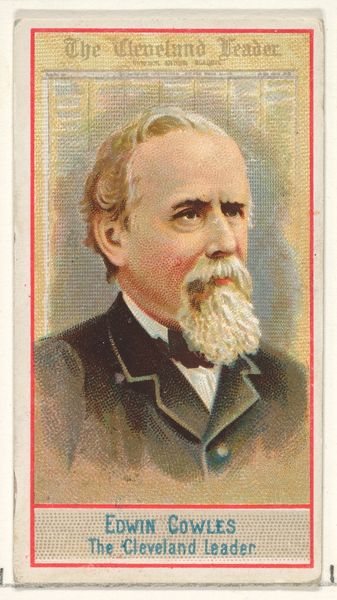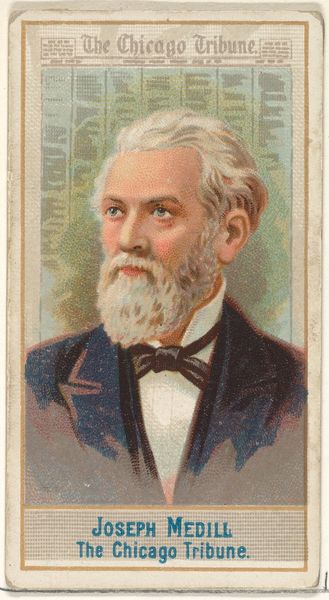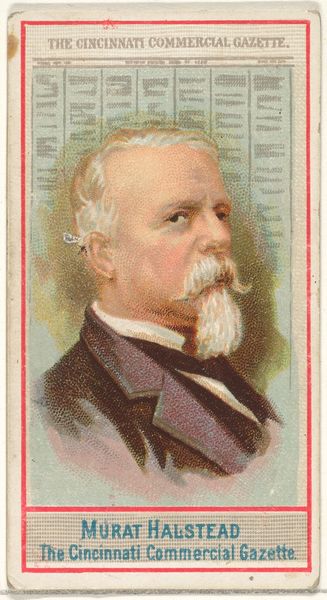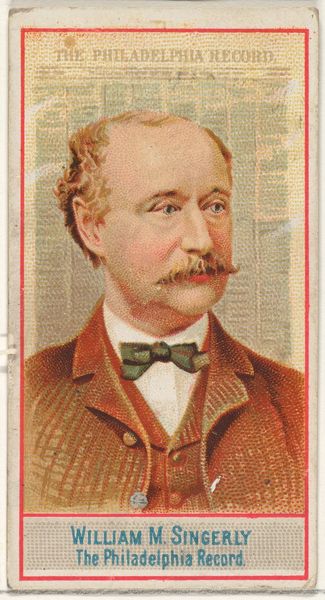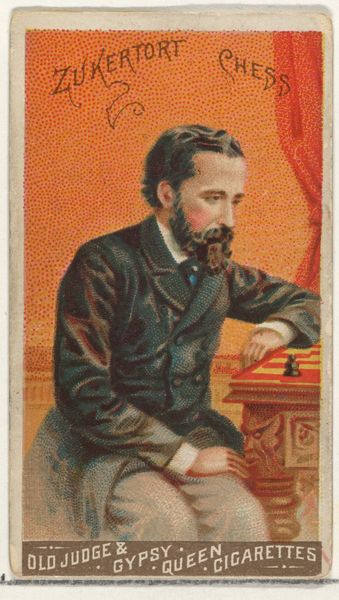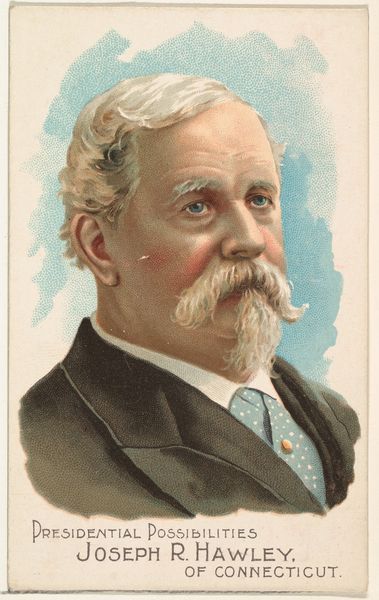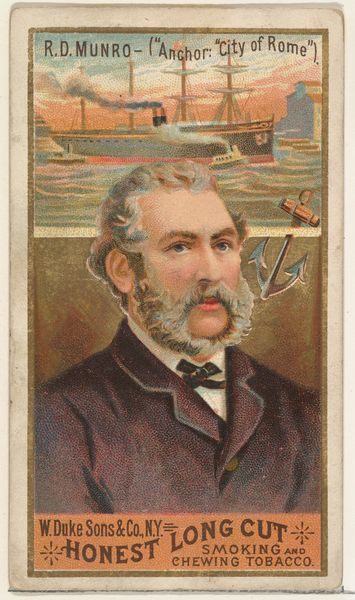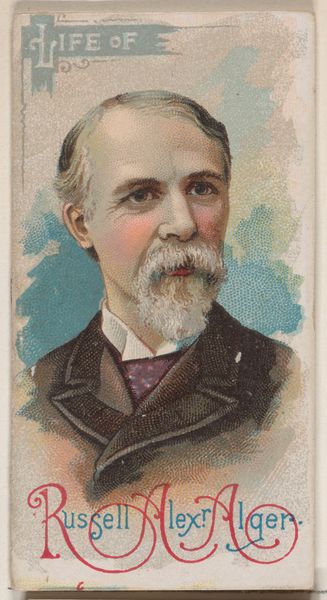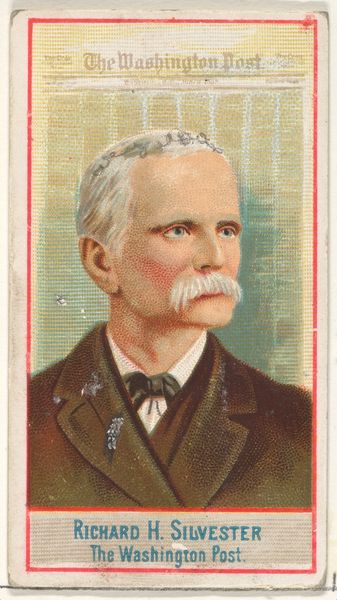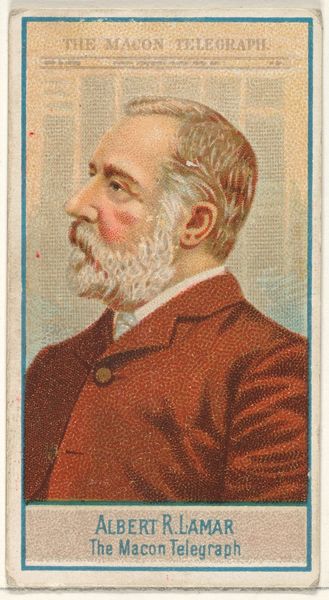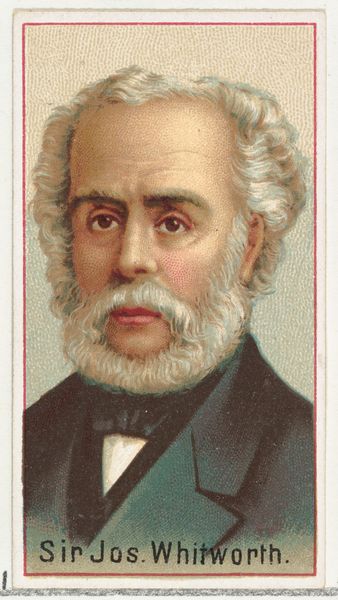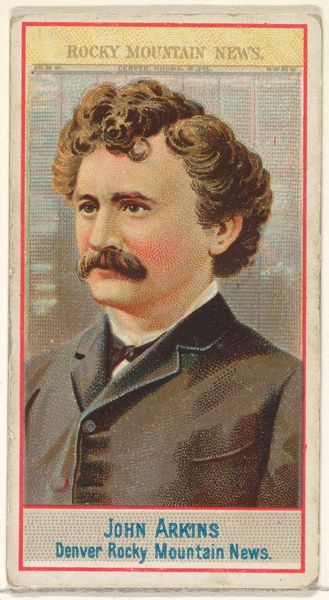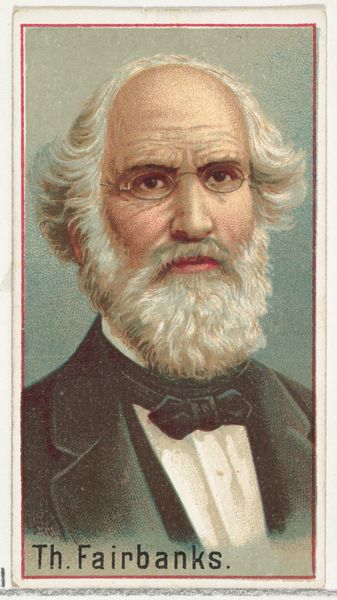
Oswald Ottendorfer, New Yorker Staats-Zeitung, from the American Editors series (N1) for Allen & Ginter Cigarettes Brands 1887
0:00
0:00
drawing, print
#
portrait
#
drawing
#
yellowing
#
yellowing background
#
photo restoration
#
portrait image
# print
#
portrait reference
#
yellow element
#
men
#
yellow accent
#
portrait art
#
fine art portrait
#
celebrity portrait
Dimensions: Sheet: 2 3/4 x 1 1/2 in. (7 x 3.8 cm)
Copyright: Public Domain
Curator: This small printed card features Oswald Ottendorfer of the New Yorker Staats-Zeitung, and it comes from a series of American Editors made for Allen & Ginter Cigarettes around 1887. The piece is held in the collection of the Metropolitan Museum of Art. Editor: It has this peculiar blend of formality and ephemeralness. The sitter has the stern, self-important demeanor we expect from a 19th-century portrait. And yet, it's tiny! It feels more like a token, meant for brief admiration and then… perhaps discarded. Curator: That's where the context comes in, and where the politics of image creation gets very interesting. These cigarette cards were hugely popular, essentially functioning as advertising. Allen & Ginter weren't just selling tobacco; they were selling aspirations and affiliations through figures like Ottendorfer. Editor: So Ottendorfer, as editor of a German-language newspaper, becomes a collectible commodity himself? It highlights the paper's materiality, in that sense. To see the newspaper publisher packaged along tobacco underlines consumption as a crucial layer within news distribution itself. The drawing is lithographed, reproduced *en masse.* Curator: Precisely! Ottendorfer was a major figure in the German-American community and an important voice in New York politics. By including him, Allen & Ginter acknowledged this demographic and sought their business. It demonstrates the evolving public role of ethnic presses at this moment. The piece has an accessible size meant to increase readership as the publishers are recognized in the hand. Editor: It’s unsettling, thinking about how deeply intertwined journalism and industry were then… and arguably still are. The print reminds me of how our leaders themselves may only live as memories on archived paper one day. Curator: Definitely food for thought as we move further through the exhibit. Thanks for your material analysis of how these figures move and are produced into collectibles to affect the sociopolitical lens. Editor: Yes, that little piece certainly opened some pathways of insight. I suppose, one truly has to analyze art pieces in their intended medium, to catch the underlying context within which they operate.
Comments
No comments
Be the first to comment and join the conversation on the ultimate creative platform.
